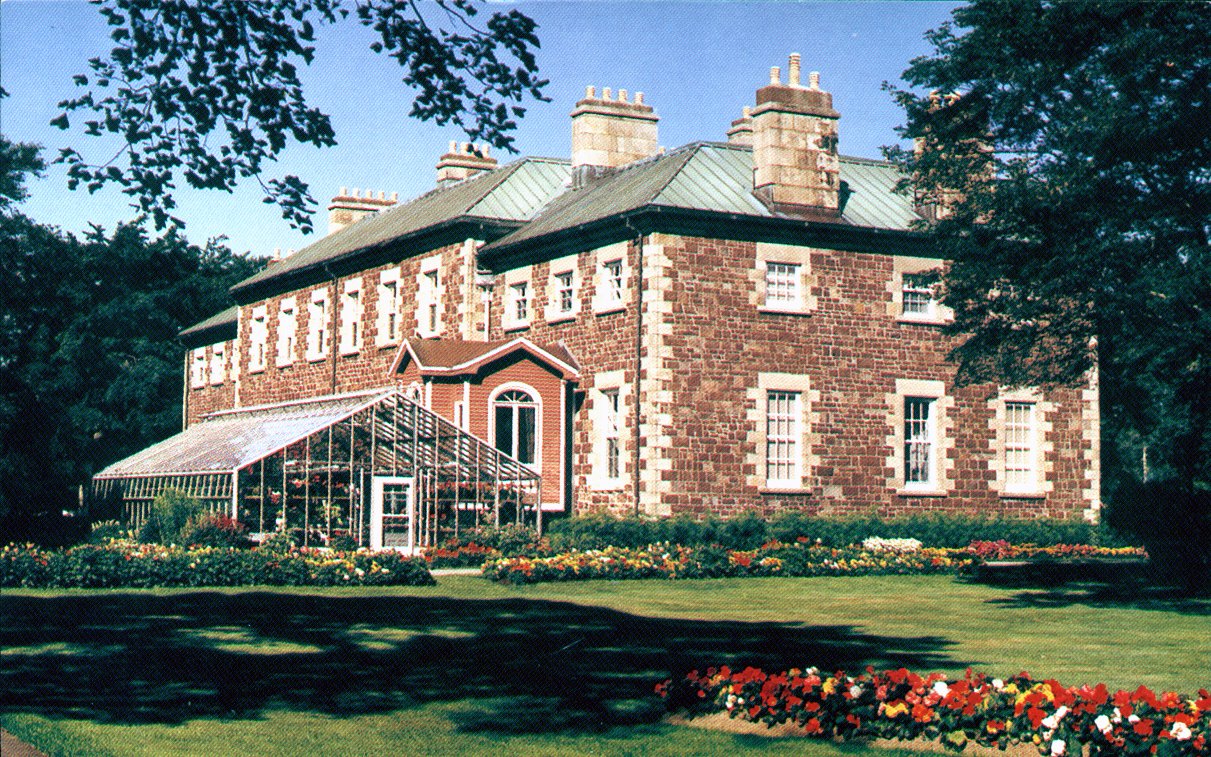Provincial Government Houses
Each province has its own Government House, and they are the official residences of the lieutenant governor, who is the official representative of the British Crown. The position of lieutenant governor is a uniquely Canadian institution, and was created by the British North America Act, now known as the Constitution Act.
These houses were usually designed to allow for ceremonial processions to both honour and impress visiting dignitaries, with a salon, dining room, and ballroom.
Government House of Nova Scotia
As one might expect, the government house of Nova Scotia is the oldest government house in Atlantic Canada. Located in downtown Halifax, construction started in 1800, ordered by governor Sir John Wentworth. Built in the Georgian style, many of the materials used in its construction were sourced locally; the stone came from Antigonish, Bedford Basin, Cape Breton, Lockeport, Lunenburg and Pictou, brick from Dartmouth and pine from the Annapolis Valley.
The classical design and projecting wings with semi-circular bays were typical features of a gentleman’s residence in rural England in the late 18th century.
It survived a fire in 1854, but it was not well maintained over the years and had to undergo extensive restoration in the early 2000s. It was rededicated by Queen Elizabeth II in 2010. It was designated a National Historic Site in 1982.
Government House of New Brunswick
Located in Fredericton, it stands on 11 acres along the St. John River. It was designed by architect James Woolford in the Georgian style between 1826 and 1828 on the site of a former Acadian settlement. In 1890, the then Lieutenant Governor Samuel Tilley felt the maintenance budget was insufficient and consequently relocated the official residence. The house, thereafter, served many other roles. From 1896 to 1990, it served as New Brunswick’s Institute for the Deaf and Dumb, it was a military barracks through the First World War, a soldier’s hospital following the war and from 1934 to 1988 it was the regional headquarters of the Royal Canadian Mounted Police. It was returned to its original purpose in 1999. Designated a National Historic Site in 1958.
Government House of Newfoundland and Labrador
The royal charter of 1825 gave official colonial status to Newfoundland. The first governors of Newfoundland were naval officers who resided on their ships anchored in St. John’s harbour.
The plans for Government House were drawn up in England. Apparently, workmen’s wages were too high in Newfoundland so workmen in Scotland were hired and arrived in St. John’s in 1827 to begin construction. Local sandstone, quarried at Signal Hill, was used on the exterior. It was completed in 1831 and was designated a national historic site of Canada in 1982.
Government House of Prince Edward Island
This wood-frame, neo-classical beauty was designed by local architect Isaac Smith who had immigrated to PEI in 1817 at the age of 22. The house was constructed between 1832 and 1834 on 100 acres of land known today as Fanningbank. The land was set aside in 1789 by Lieutenant Governor Edmund Fanning as Crown land. In 1873, 10 acres was retained for the Government House and 40 acres were given to the City of Charlottetown and later became Victoria Park. Designated a National Historic Site in 1971.



